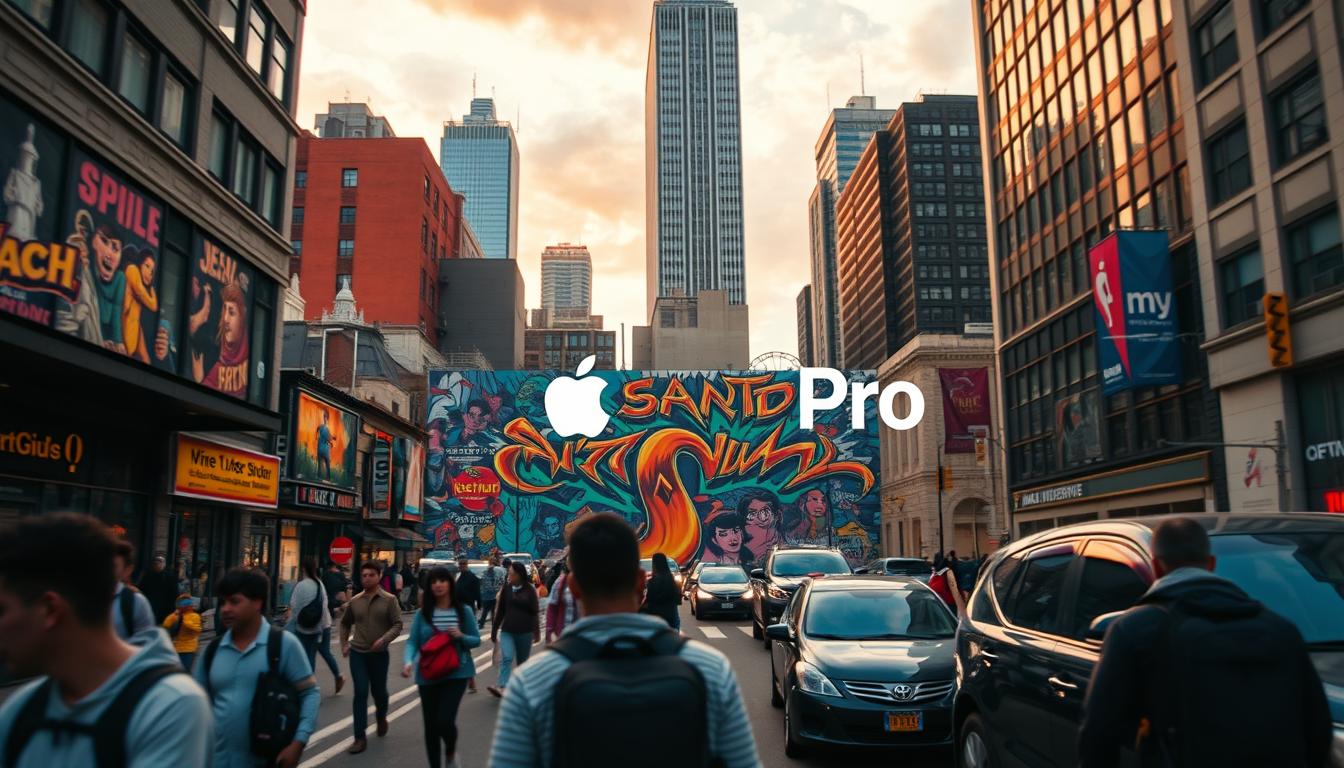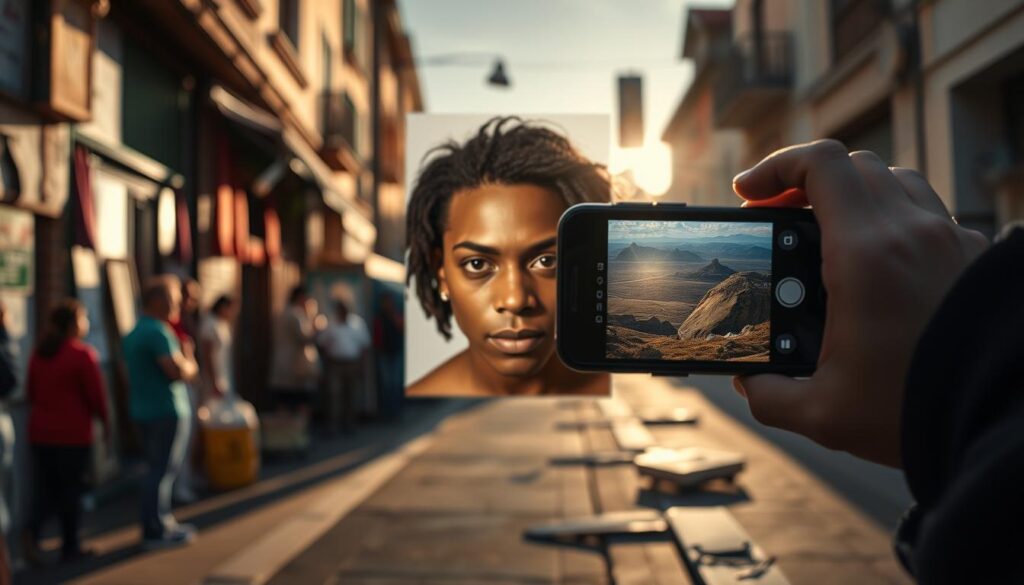
In 2015, Apple launched the groundbreaking “Shot on iPhone” campaign, which revolutionized marketing by transforming everyday iPhone users into powerful brand ambassadors. This innovative strategy showcased the iPhone’s exceptional camera capabilities through user-generated content, creating a wave of authenticity that captivated audiences worldwide.
By encouraging users to share their photos and videos, Apple harnessed the power of real stories and moments. This approach not only highlighted the device’s camera quality but also fostered a deep emotional connection with the audience. The campaign’s success was evident in the over 70 million interactions it generated on Instagram alone, demonstrating the impact of genuine, user-driven content.
The “Shot on iPhone” campaign didn’t just boost sales; it redefined how brands engage with their customers. By leveraging user-generated content, Apple created a sense of community and trust, setting a new standard in marketing. This strategy’s effectiveness led to record iPhone sales and numerous awards, solidifying its place as a landmark in advertising history.
Learn more about how Apple’s strategy aligns with modern e-commerce SEO practices and how user-generated content continues to shape marketing efforts today.
Overview of the Shot on iPhone Campaign
In 2014, Apple introduced the “Shot on iPhone” campaign, marking a significant shift in how brands engage with their audiences. This initiative was launched alongside the iPhone 6, which featured an 8-megapixel camera, a notable upgrade at the time. By inviting users to share their photos and videos using specific hashtags like #shotoniphone, Apple created a platform for everyday people to showcase their creativity.
Campaign Background and Launch
The campaign’s core idea was to highlight the iPhone’s camera capabilities through authentic, user-generated content. Apple’s strategy focused on storytelling and authenticity, encouraging users to capture and share moments from their lives. This approach not only demonstrated the device’s quality but also built a community around iPhone photography.
Marketing Objectives and Target Audience
The primary goal was to increase brand awareness and customer engagement. Targeting millennials passionate about photography and social media, Apple leveraged platforms like Instagram and Twitter to reach its audience effectively. The use of hashtags facilitated widespread participation, making the campaign both inclusive and viral.
Learn more about how Apple’s strategy aligns with modern digital marketing practices and how user-generated content continues to shape marketing efforts today.
Evolution and Impact of Apple’s User-Generated Content Strategy
Apple’s “Shot on iPhone” campaign has undergone significant transformations since its inception, each iteration enhancing its impact and deepening consumer engagement. This evolution underscores Apple’s commitment to leveraging user-generated content to foster authenticity and community.
Milestones and Iterations
The campaign began in 2015, focusing on the iPhone’s camera capabilities. Over the years, it has expanded to include models like the iPhone X, XR, and 12 Pro, each introducing improved features that encouraged more creative submissions. These updates not only showcased technological advancements but also highlighted diverse user experiences, from landscapes to portraits.
Effect on Brand Perception and Sales Growth
The strategy has profoundly influenced how consumers view Apple. By featuring authentic images, Apple positioned itself as a leader in photography, leading to a 24% increase in sales. The campaign’s success is evident in over 15 million social media interactions, demonstrating its ability to resonate with a broad audience and drive engagement.
| Model | Year | Key Features | Impact |
|---|---|---|---|
| iPhone 6 | 2014 | 8-megapixel camera | Launched the campaign, emphasizing camera quality |
| iPhone X | 2017 | Dual-camera setup | Enhanced portrait mode capabilities, increasing user creativity |
| iPhone 12 Pro | 2020 | ProRAW support | Appealed to professional photographers, expanding creative possibilities |
Each milestone built on previous successes, solidifying Apple’s reputation. The campaign’s ability to evolve while maintaining its core message of authenticity has been key to its enduring impact. Learn more about how Apple’s strategy aligns with modern digital marketing practices and the role of user-generated content in shaping marketing efforts.

Shot on iPhone Campaign: Leveraging Authentic User-Generated Content
Apple’s innovative “Shot on iPhone” campaign redefined how brands engage with their audiences by turning everyday users into brand ambassadors. By inviting iPhone users to share their photos and videos using hashtags like #shotoniphone, Apple created a platform for authentic storytelling.
Empowering Users as Brand Ambassadors
The campaign empowered users by showcasing their creativity on a global stage. Apple’s team curated and approved submissions, featuring the best content on billboards, social media, and retail stores. This not only highlighted the iPhone’s camera quality but also fostered a sense of community among participants.
Social Media and Viral Engagement
The campaign thrived on social media, with platforms like Instagram and Twitter amplifying user-generated content. Over 41,000 submissions were received, and the hashtag #shotoniphone trended globally. This viral engagement boosted brand awareness and drove sales, demonstrating the power of authentic user content.

By leveraging user-generated content, Apple created a campaign that resonated deeply with its audience, setting a new standard in marketing authenticity and engagement.
Innovative Advertising and Multi-Channel Strategy
Apple’s “Shot on iPhone” campaign stands out as a prime example of innovative advertising and multi-channel strategy. By blending traditional methods with modern digital approaches, Apple created a cohesive and impactful campaign that reached a wide audience.
Integration of Billboards, TV, and Print
Apple effectively combined billboards, TV commercials, and print ads to showcase the iPhone’s camera capabilities. These traditional mediums were used to display stunning, user-generated images, capturing the attention of people worldwide. The campaign’s message was consistent across all channels, ensuring that the iPhone’s photography features were highlighted in every format.
In-Store Displays and Experiential Marketing
Apple Stores were transformed into immersive environments, featuring large displays of photos taken with iPhones. This experiential approach allowed customers to interact with the product and see the quality of the images firsthand. The in-store experience fostered a sense of community, as users shared their own photos and stories.

The combination of traditional and digital strategies, along with immersive in-store displays, made the “Shot on iPhone” campaign a benchmark for effective multi-channel marketing. By curating high-quality images and ensuring consistency across all platforms, Apple reinforced its brand and product strengths.
Lessons and Best Practices for Iconic Marketing Campaigns
Apple’s “Shot on iPhone” campaign offers valuable lessons for marketers aiming to create impactful and memorable campaigns. By focusing on authenticity, compelling visuals, and seamless integration across platforms, brands can craft stories that resonate deeply with their audience.
Authenticity and Real-World Imagery
One of the key takeaways from the campaign is the power of authenticity. By showcasing real-world imagery created by everyday users, Apple demonstrated the iPhone’s capabilities while fostering a sense of trust and connection. This approach emphasizes the importance of user-generated content in modern marketing, as it provides a genuine perspective that resonates more deeply than staged advertisements.
The campaign’s success was largely due to its ability to highlight the iPhone’s camera quality through real-life moments. This strategy not only demonstrated the product’s features but also created a sense of community among users, making them feel like active participants in the brand’s storytelling process.
Visual Storytelling and Diverse Content
The “Shot on iPhone” campaign thrived on visual storytelling, proving that images can speak louder than words. By encouraging users to share their photos and videos, Apple created a diverse and engaging content library that catered to a wide range of audiences. This diversity ensured that the campaign remained fresh and exciting, capturing the attention of different demographic groups.
Apple’s use of storytelling through visuals also highlighted the importance of quality and creativity. The campaign not only showcased the iPhone’s technical capabilities but also inspired users to explore their own creative potential, turning everyday moments into extraordinary stories.
Seamless Cross-Platform Integration
Another crucial lesson from the campaign is the importance of seamless cross-platform integration. Apple effectively used billboards, social media, and in-store displays to create a cohesive and consistent brand message. This unified approach ensured that the campaign reached a wide audience and maintained its impact across different mediums.
By integrating the campaign across various platforms, Apple demonstrated how consistent messaging can enhance brand recognition and engagement. This strategy not only amplified the campaign’s reach but also reinforced the brand’s identity and values, making it a benchmark for effective multi-channel marketing.
“Authenticity and storytelling are the heart of any successful campaign. When you empower your audience to tell your story, you create a connection that goes beyond traditional advertising.”
These lessons from the “Shot on iPhone” campaign provide a roadmap for marketers seeking to create iconic campaigns. By focusing on authenticity, visual storytelling, and seamless integration, brands can create engaging and memorable experiences that resonate with their audience and leave a lasting impact.

Macro Photography as a Game-Changer in iPhone Innovation
Macro photography has emerged as a groundbreaking feature in iPhone innovation, offering users unprecedented ways to capture the world’s smallest details. This advancement has not only enhanced the iPhone’s camera capabilities but also inspired a new wave of creativity among photographers and enthusiasts alike.
Technical Breakthroughs in iPhone 13 Pro
The iPhone 13 Pro introduced remarkable advancements in macro photography. A new lens design, wider aperture, and improved autofocus system enable users to capture subjects from as close as 2 centimeters. These technical enhancements have made macro photography more accessible and rewarding for everyone.
Tips for Capturing Macro Moments
- Set focus manually for precise control over your subject.
- Experiment with .5x or 1x framing options to explore different perspectives.
- Stabilize your phone to avoid blur and ensure sharp images.
Everyday subjects like flowers, insects, or even small objects can be transformed into stunning works of art through macro photography. These innovations extend the legacy of the “Shot on iPhone” campaign by inspiring users to explore new creative possibilities.

Learn more about the latest iPhone features and how they continue to shape the future of photography: Apple’s latest innovations.
Conclusion
Apple’s “Shot on iPhone” campaign stands as a testament to innovative marketing and user engagement. By leveraging user-generated content, Apple transformed everyday users into passionate brand ambassadors, creating a powerful and authentic narrative.
This campaign’s evolution and impact are undeniable. It not only highlighted the iPhone’s camera capabilities but also redefined how brands connect with their audiences. The integration of traditional and digital marketing strategies, along with technological advancements like macro photography, solidified the campaign’s success and legacy.
One of the key lessons from this campaign is the importance of authenticity and visual storytelling. By encouraging users to share their photos and videos, Apple created a diverse and engaging content library that resonated with a wide audience. This approach not only demonstrated the iPhone’s technical capabilities but also inspired users to explore their creative potential, turning everyday moments into extraordinary stories.
The campaign’s success can also be attributed to its seamless cross-platform integration. Apple effectively used billboards, social media, and in-store displays to create a cohesive and consistent brand message. This unified approach ensured that the campaign reached a wide audience and maintained its impact across different mediums.
As you consider your own marketing strategies, remember the power of authentic content and innovative techniques. By empowering your audience to tell your story, you can create a connection that goes beyond traditional advertising. Take inspiration from Apple’s approach and craft campaigns that resonate deeply with your audience, leaving a lasting impact in the digital landscape.
In conclusion, the “Shot on iPhone” campaign’s enduring legacy lies in its ability to blend authenticity, creativity, and technology. It serves as a blueprint for creating memorable and engaging marketing efforts, proving that when you empower your audience, the results can be extraordinary.

 Shot on iPhone Campaign: How Apple Turned Users into Marketers
Shot on iPhone Campaign: How Apple Turned Users into Marketers
0 Comment